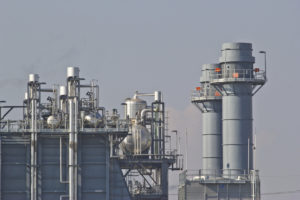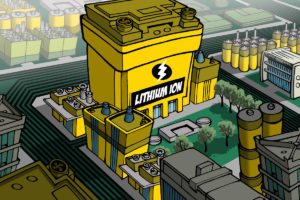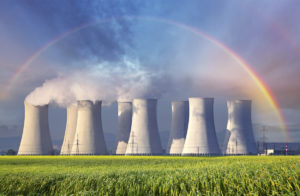Facts, Figures, and Findings from EPRI Research, Reports, and Other Sources

Fixing one leaky valve at a combined-cycle power plant could save hundreds of thousands of dollars in annual fuel costs, an EPRI study finds. As U.S. combined-cycle plants operate at higher output, spending increases for fuel and emission controls. Plants that reduce heat rateheat rate can save significant dollars. Among the dozens of potential modifications and actions EPRI is evaluating to improve heat rate, one focuses on leakage in the steam cycle’s fluid paths. Often undetected, steam or water losses result in less fluid available for generation and may increase fuel consumption. In field tests, EPRI identified and quantified the ...
Read More
Read More

Folding Rotor Concept Could Enable Offshore Turbines with Six Times More Power
Imagine a wind turbine with blades longer than two football fields that curve and fold in the wind like a palm tree’s fronds. According to a technical brief by EPRI’s innovation scouts, the application of this concept—known as the segmented ultralight morphing rotor—has the potential to increase a turbine’s power output by six times and cut in half its levelized cost of electricity. The size of conventional upwind turbines is constrained by blade mass. Blades must be stiff so that they don’t bend back and strike the ...
Read More
Imagine a wind turbine with blades longer than two football fields that curve and fold in the wind like a palm tree’s fronds. According to a technical brief by EPRI’s innovation scouts, the application of this concept—known as the segmented ultralight morphing rotor—has the potential to increase a turbine’s power output by six times and cut in half its levelized cost of electricity. The size of conventional upwind turbines is constrained by blade mass. Blades must be stiff so that they don’t bend back and strike the ...
Read More

An EPRI study points to the design of solar power plants as a critical driver of long-term performance and electricity costs. Because companies that build solar photovoltaic plants often do not own them long-term, they often choose designs that reduce upfront capital costs and meet near-term performance guarantees. However, over the life of the plant this may lead to lower-than-expected generation and higher-than-expected operations and maintenance costs. As utilities increasingly own and manage solar assets, design decisions should consider long-term performance and costs. EPRI interviewed experts in the solar and electric power industries to compile insights on how various design ...
Read More
Read More

Momentum Builds Behind Lithium Ion Battery Technology
Propelled by rapidly falling costs, lithium ion battery technology is likely to dominate the grid-scale energy storage market for at least the next five years, concludes an EPRI report. Although conventional wisdom holds that lithium ion technology is not ideal for many large-scale grid applications, it has a significant head start over competing technologies with respect to grid deployment. Lithium ion costs have fallen dramatically in recent years, driven by investments in the consumer electronics and electric vehicle industries. Manufacturers of lithium ion batteries tend to be large companies with strong balance sheets ...
Read More
Propelled by rapidly falling costs, lithium ion battery technology is likely to dominate the grid-scale energy storage market for at least the next five years, concludes an EPRI report. Although conventional wisdom holds that lithium ion technology is not ideal for many large-scale grid applications, it has a significant head start over competing technologies with respect to grid deployment. Lithium ion costs have fallen dramatically in recent years, driven by investments in the consumer electronics and electric vehicle industries. Manufacturers of lithium ion batteries tend to be large companies with strong balance sheets ...
Read More

Advanced Tools to Help Design Nuclear Plants for High-Frequency Earthquakes
EPRI has demonstrated robust advanced computer models for considering the effects of high-frequency earthquakeshigh-frequency earthquakes in the design of new nuclear power plants. The design of most existing nuclear plants incorporates potential effects of low-frequency earthquakeslow-frequency earthquakes. Until recently, there has been little research examining how high-frequency earthquakes can impact the structural integrity and operation of nuclear plant components. As more data on this became available, plant designers and operators added new design considerations. To test the new models, EPRI used them to evaluate the effects of high-frequency earthquakes on ...
Read More
EPRI has demonstrated robust advanced computer models for considering the effects of high-frequency earthquakeshigh-frequency earthquakes in the design of new nuclear power plants. The design of most existing nuclear plants incorporates potential effects of low-frequency earthquakeslow-frequency earthquakes. Until recently, there has been little research examining how high-frequency earthquakes can impact the structural integrity and operation of nuclear plant components. As more data on this became available, plant designers and operators added new design considerations. To test the new models, EPRI used them to evaluate the effects of high-frequency earthquakes on ...
Read More

